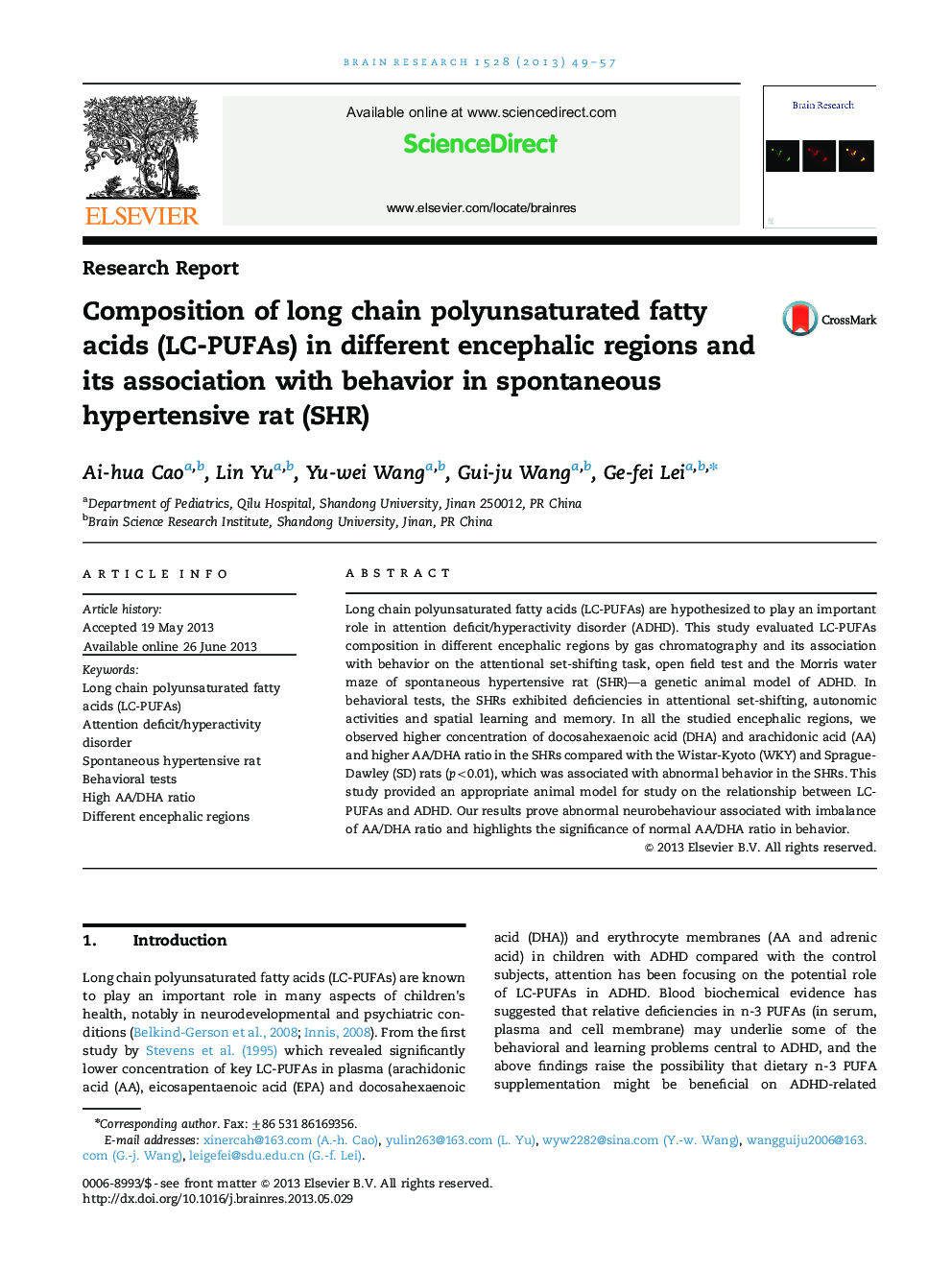| Article ID | Journal | Published Year | Pages | File Type |
|---|---|---|---|---|
| 6263730 | Brain Research | 2013 | 9 Pages |
â¢Composition of LC-PUFA in ADHD symptom-related encephalic regions is mapped.â¢Low DHA/AA ratio in brain is associated with abnormal behavior in ADHD.â¢This study establishes a suitable animal model for the study of LC-PUFA-ADHD link.
Long chain polyunsaturated fatty acids (LC-PUFAs) are hypothesized to play an important role in attention deficit/hyperactivity disorder (ADHD). This study evaluated LC-PUFAs composition in different encephalic regions by gas chromatography and its association with behavior on the attentional set-shifting task, open field test and the Morris water maze of spontaneous hypertensive rat (SHR)-a genetic animal model of ADHD. In behavioral tests, the SHRs exhibited deficiencies in attentional set-shifting, autonomic activities and spatial learning and memory. In all the studied encephalic regions, we observed higher concentration of docosahexaenoic acid (DHA) and arachidonic acid (AA) and higher AA/DHA ratio in the SHRs compared with the Wistar-Kyoto (WKY) and Sprague-Dawley (SD) rats (p<0.01), which was associated with abnormal behavior in the SHRs. This study provided an appropriate animal model for study on the relationship between LC-PUFAs and ADHD. Our results prove abnormal neurobehaviour associated with imbalance of AA/DHA ratio and highlights the significance of normal AA/DHA ratio in behavior.
